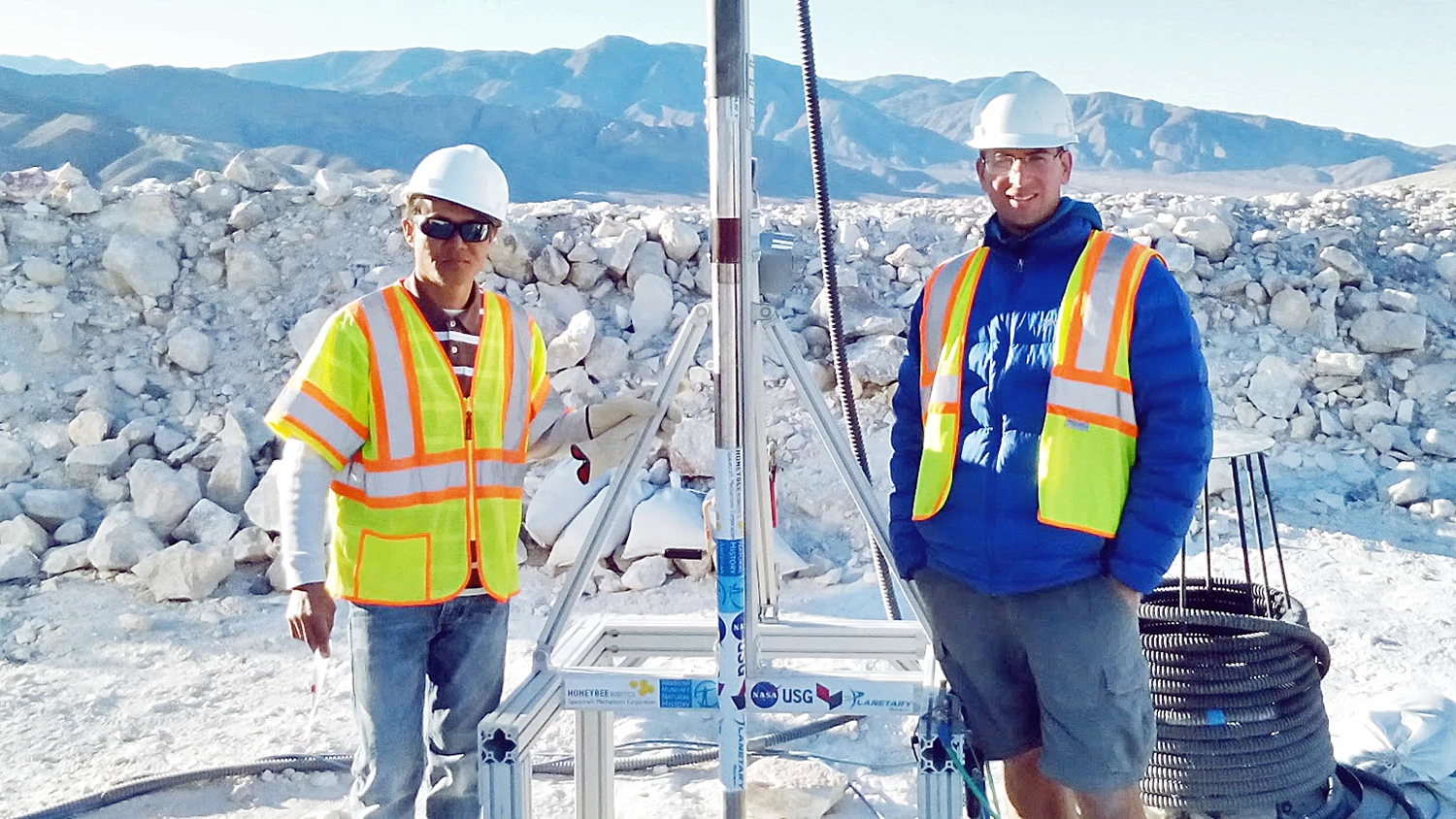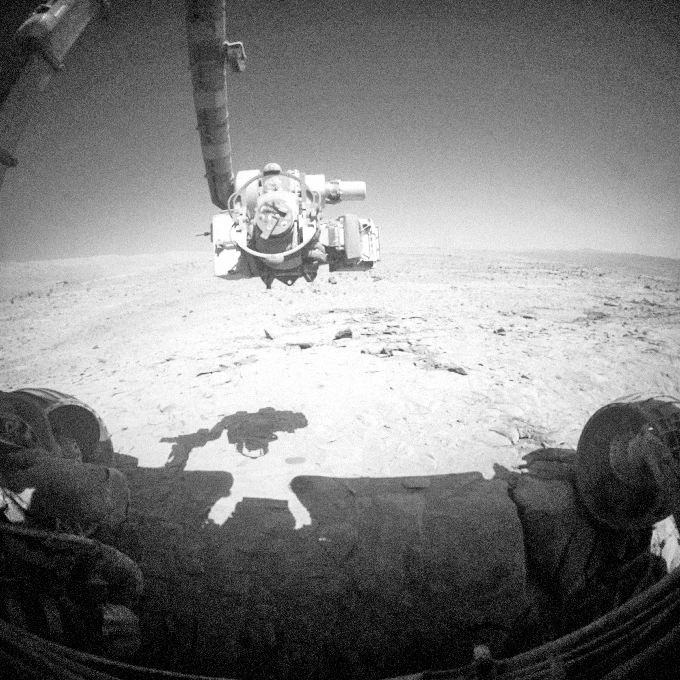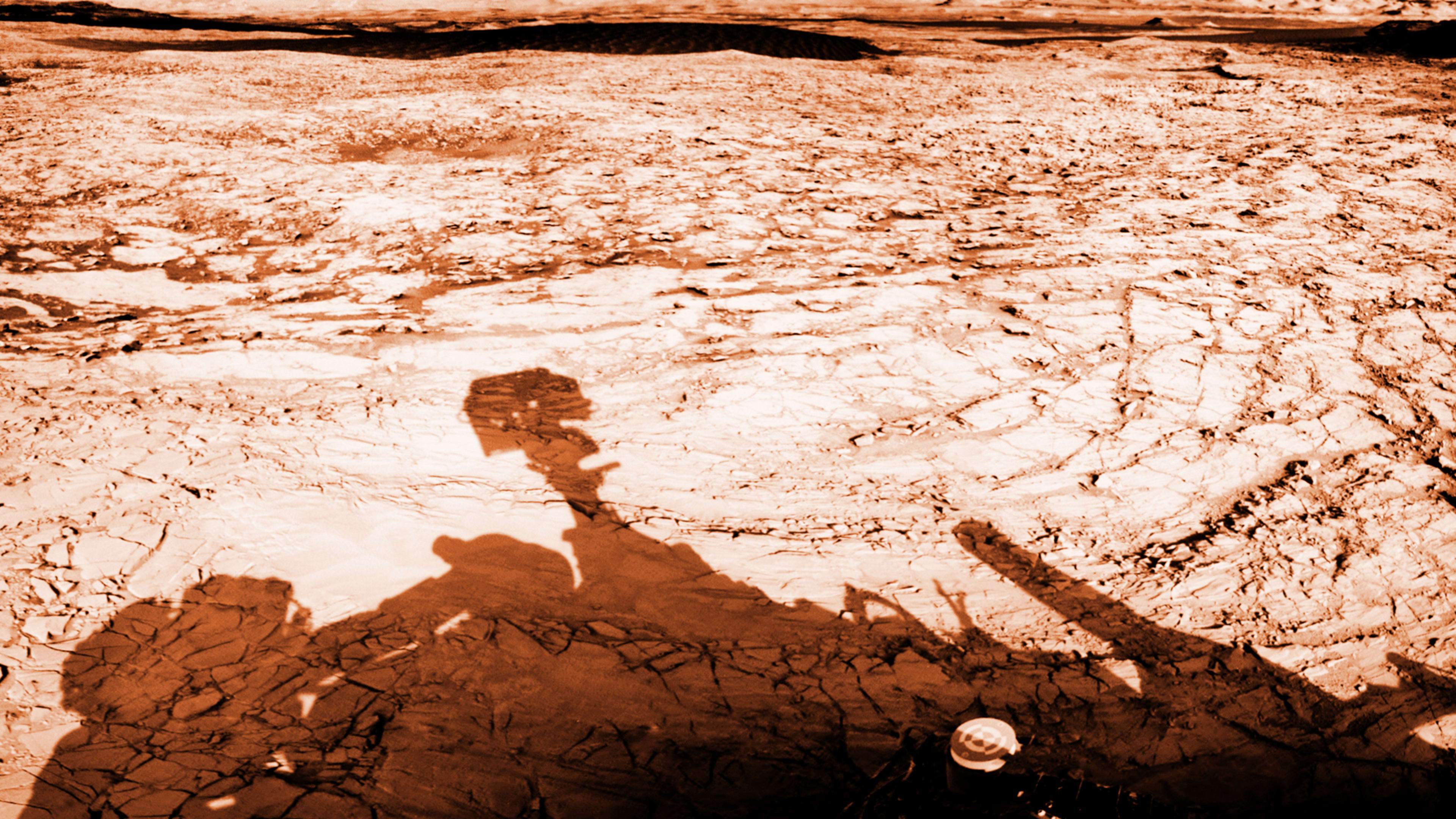When the next Mars rover lands in 2020, one of its goals will be to see if the red planet’s rocks are hiding proof of extraterrestrial microbes. NASA dreams of one day exploring the ice glaciers of the planet’s poles to see if there is indeed life on Mars. Until then, the space agency is busy testing the ET-hunting technology.
That’s how I found myself driving five hours from my Los Angeles office deep into the California desert. My destination was an isolated quarry, more than five miles from the nearest town, just near the ecological disaster that is California’s Salton Sea.
I was headed to a place named Plaster City, which is where Sheetrock, the ubiquitous building material, is made. Sheetrock’s manufacturer, USG (originally known as United States Gypsum) quarries the gypsum that is used to make the material at the site. It also hosts some gypsum deposits there that largely replicate the density of Mars’ glaciers. An impossibly narrow-gauge railroad carries the quarried minerals to a refinery 20 miles south, close to the Mexican border, where they will be turned into Sheetrock. As I get ready to head uphill to the Martian test site, a quarry employee warns me to look out for rattlesnakes.
On a quarry hilltop, Bolek Mellerowicz of Honeybee Robotics is testing equipment that may make it to Mars one day. Honeybee Robotics manufactures specialized components for spacecraft, and Mellerowicz is an electrical engineer who specializes in building robotics for harsh environments. His work has led him to Greenland and the Canadian Arctic, and today he is studying rock samples in a California desert that’s 65 degrees in September and climbs to 120 in the summer.
It’s a pleasant autumn day here in the desert, but temperatures are going to get real warm over the next few months as his team tries to replicate Martian conditions. The gypsum below my feet, it turns out, is key.

“The thickness and the density of the gypsum is similar to glacial ice on Mars, which was up to 200 feet thick at one time. Here on the Salton Trough, the gypsum is 6.5 million years old,” Mellerowicz added.
Honeybee is perfecting the Planetary Deep Drill. It’s a proof-of-concept coring drill which could one day take samples from deep under the ice of Mars and Europa and, hopefully, find proof of organic molecules that may indicate life.
In a few months, it’s headed to Greenland, where an instrument called Scanning Habitable Environments with Raman and Luminescence for Organics & Chemicals (SHERLOC) will be attached to it. SHERLOC will go on the Mars 2020 mission to help find evidence of organic compounds that could indicate extraterrestrial life; NASA and the American Museum of Natural History are helping with funding.
The deep drill comes with two challenges, particular to space exploration, which require a very specific skill set from the engineers working on the project:
- For the foreseeable future, Mars explorer rovers won’t keep samples with them. Rather, they acquire samples, quickly transmit the results to Earth, and dispense with the samples so they don’t put on too much weight.
- Mars and Europa are a long way from Earth, and the drill has to work without errors.
In other words, Honeybee is running a big-ass drill in the middle of nowhere. Mellerowicz, engineer Huey Nguyen, and representatives from USG spend their day overseeing the drill’s supervision as it takes core samples from up to 30 meters under the ground. I’m 6’2″ and the drill towers above me at 18 feet in height; it’s covered in stickers from Honeybee, NASA, and other sponsors, and has cables running to a nearby U-Haul trailer that serves as an impromptu control center. A nearby generator supplies power. It’s designed to operate on under 250 watts of electricity, a safe power supply for very expensive spacecraft exploring a long way from Earth.
The drill pulverizes the rock below it and extracts core samples; Honeybee and NASA then plan to apply the technique to Mars’s polar ice, which can indeed be as hard as stone.
Dominic Dannessa, USG’s CTO, tells Fast Company that “The topography of the area is similar to what NASA expects to find on Mars and Europa;” Honeybee is one of a number of vendors creating technology for the next Martian rover.

Because the drill has to operate on Mars, far away from human controllers, it has to work in a more or less automated fashion. As Mellorowicz showed me around the cramped confines of the trailer, he showed off the drill’s secret sauce: a microscopic camera in the drill which looks for signs of microorganisms. Using UV and LED lights, the drill can find microorganisms that flouresce; “Bioflourescence from microorganisms can indicate signs of life,” he added.
The trailer is filled with television monitors and laptops running telemetry data from the drill; Mellerowicz and his team work 6 a.m.- 4 p.m. shifts on site there, with the goal of making the drill fully autonomous.

Thanks to tectonic processes accumulated over the millennia, there are approximately 200 feet of gypsum underneath the Planetary Deep Drill. As it works, slowly excavating the minerals underneath it, Honeybee and NASA are both planning further iterations of the drill before it’s reformatted for its Martian debut. According to Mellerowicz, the finished product will be much shorter with different dimensions. All the drilling at Plaster City and USG is designed as a test, in order to prime the drill for its Martian debut.
Meanwhile, the big question for Honeybee–and NASA–is where exactly the drill will be used. Honeybee hopes a version of the drill will make it onto the Mars 2020 Rover, but nothing is set in stone. Everything is up to the vagaries of R&D, government budgets, and a million other factors. In the meantime, I touch a recently excavated sample from the drill. It’s still warm to the touch, and the space equipment manufacturer still has years of research to go. The next step for research, Honeybee hopes, is taking the drill to Greenland–another inhospitable environment that also happens to be very close to what we’d expect outside of Earth.
Recognize your brand’s excellence by applying to this year’s Brands That Matter Awards before the early-rate deadline, May 3.









